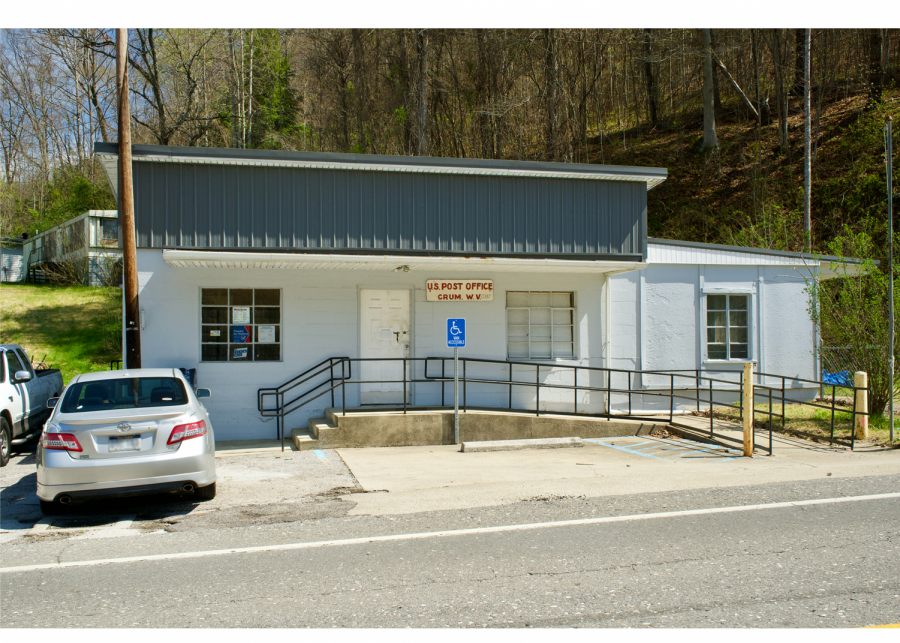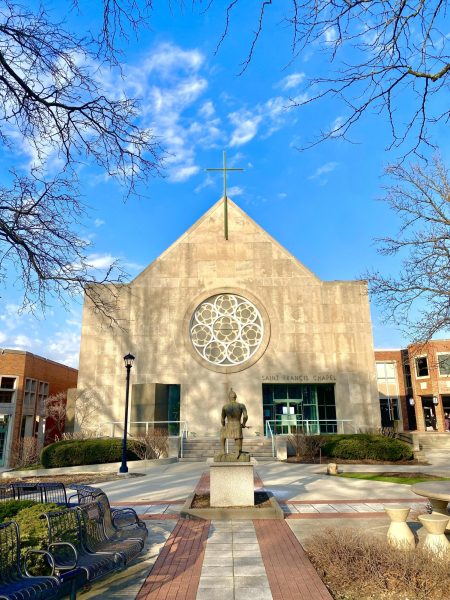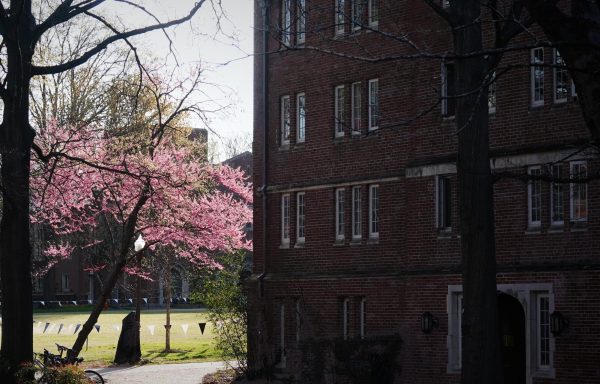Crum, WV- a town on borrowed time
As of the 2010 Census, Crum’s population was 182. The town is only an hour from Huntington and sits on the border between the southern county line of Wayne and the northern line of Mingo County and on the West Virginia side of the Tug Fork, or Tug River, which divides the Mountain State with Kentucky.
April 15, 2021
CRUM, W.Va. — As of the 2010 Census, Crum’s population was 182. The town is only an hour from Huntington and sits on the border between the southern county line of Wayne and the northern line of Mingo County and on the West Virginia side of the Tug Fork, or Tug River, which divides the Mountain State with Kentucky.
The town was one of many in the area of southern Wayne and Mingo Counties that experienced the golden era of West Virginia coal mining, and now they have lived through its decline.
The town has been hit hard in the past year, with multiple teachers’ deaths due to COVID-19 and considerable flooding from the ice storms earlier this year. Combined with the already challenging aspects of being a rural community attempting to navigate to virtual school and church, residents say they have been exhausted and frustrated.
“It’s hurt our community. Our churches are active again, and they are a big part of our community,” said Victory Ramey, a teacher at Crum K-8. Her husband, who was a pastor, coach and teacher, died from COVID-19 in January.
“He was a backbone in our community,” Ramey said.
Ramey went on to say that Tolsia High School had lost two math teachers due to COVID-19 and how difficult it was for their area to keep math teachers.
“It’s been a rough year; it’s been a very rough year,” Ramey said.
Crum K-8 school is the center of Crum, and many programs that help people get by are organized from the school and any number of the five churches within an earshot of the school building.
Nona Newsome, the school principal, spoke about the “blessing box,” which community members constantly restock for those with a food shortage can come and take what they need.
“People that live in the community — if they see that it’s empty, they will come and stock it. We have multiple food pantries. We just have a lot of folks here in the community that take care of things,” Newsome said.
Newsome has been back in the area after graduating from Marshall University for over 20 years and believes she is filling a need while being in the place that she calls home.
Without these community resources, towns like Crum likely wouldn’t be able to survive, as economic drivers are nearly nonexistent. There is a post office, school, churches and a market not much larger than the size of a large convenience store. This store, known as Copley’s Market, is home to the town’s only restaurant in the back, with a small table that can seat four. The same family has run Copley’s Market for over four generations.
Newsome said the transition to virtual classes has been difficult, as it has been in many rural regions throughout the state. Still, she said she was proud of the work that the educators in their community had done.
Robert Thompson is currently writing a book about the history of Crum and spoke about the town’s economic conditions.
“In Wayne County, you had two coal companies that employed about 600 people… not just that, but there have been huge economic downturns from other industrial things throughout the county and the region,” Thompson said.
Both of these mines went under between 2011 and 2015.
Thompson said most residents had been used to the cyclical “boom and bust” nature of the coal industry, “But I think people realize it’s different this time,” he said.
Both Newsome and Thompson said they knew that kids in Crum would likely be forced to leave to find jobs or higher education when they reach adulthood.
Crum is hardly the exception of small towns in West Virginia. Due to their isolation geographically, they are almost entirely self-reliant, and community members depend on each other like family. It is these community ties that keep towns like Crum functioning, even if only enough to power the essentials of school and church.
This story was originally published on The Parthenon on April 13, 2021.





























![IN THE SPOTLIGHT: Junior Zalie Mann performs “I Love to Cry at Weddings,” an ensemble piece from the fall musical Sweet Charity, to prospective students during the Fine Arts Showcase on Wednesday, Nov. 8. The showcase is a compilation of performances and demonstrations from each fine arts strand offered at McCallum. This show is put on so that prospective students can see if they are interested in joining an academy or major.
Sweet Charity originally ran the weekends of Sept. 28 and Oct. 8, but made a comeback for the Fine Arts Showcase.
“[Being at the front in the spotlight] is my favorite part of the whole dance, so I was super happy to be on stage performing and smiling at the audience,” Mann said.
Mann performed in both the musical theatre performance and dance excerpt “Ethereal,” a contemporary piece choreographed by the new dance director Terrance Carson, in the showcase. With also being a dance ambassador, Mann got to talk about what MAC dance is, her experience and answer any questions the aspiring arts majors and their parents may have.
Caption by Maya Tackett.](https://bestofsno.com/wp-content/uploads/2024/02/53321803427_47cd17fe70_o-1-1200x800.jpg)
![SPREADING THE JOY: Sophomore Chim Becker poses with sophomores Cozbi Sims and Lou Davidson while manning a table at the Hispanic Heritage treat day during lunch of Sept 28. Becker is a part of the students of color alliance, who put together the activity to raise money for their club.
“It [the stand] was really fun because McCallum has a lot of latino kids,” Becker said. “And I think it was nice that I could share the stuff that I usually just have at home with people who have never tried it before.”
Becker recognizes the importance of celebrating Hispanic heritage at Mac.
“I think its important to celebrate,” Becker said. “Because our culture is awesome and super cool, and everybody should be able to learn about other cultures of the world.”
Caption by JoJo Barnard.](https://bestofsno.com/wp-content/uploads/2024/01/53221601352_4127a81c41_o-1200x675.jpg)













